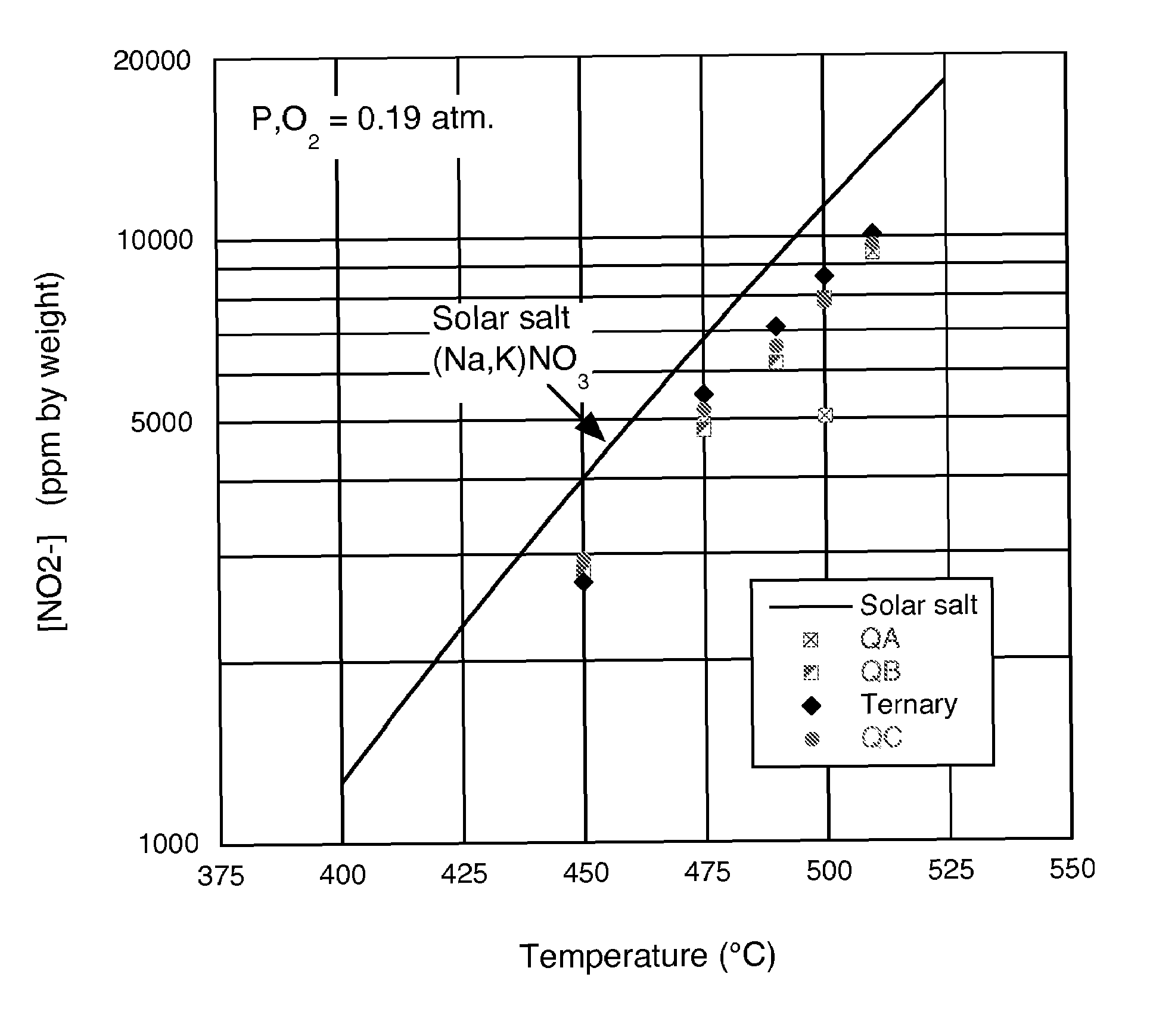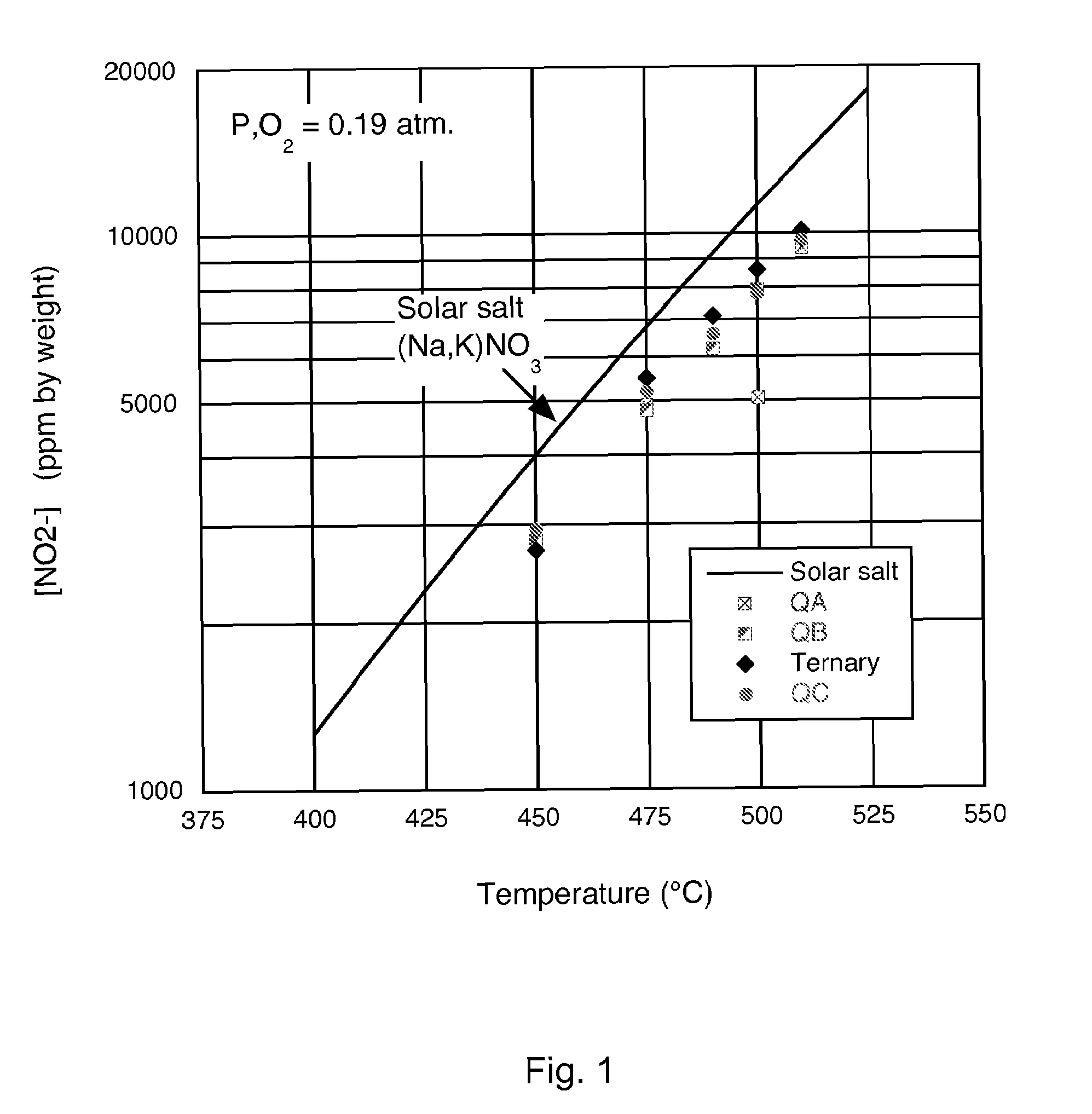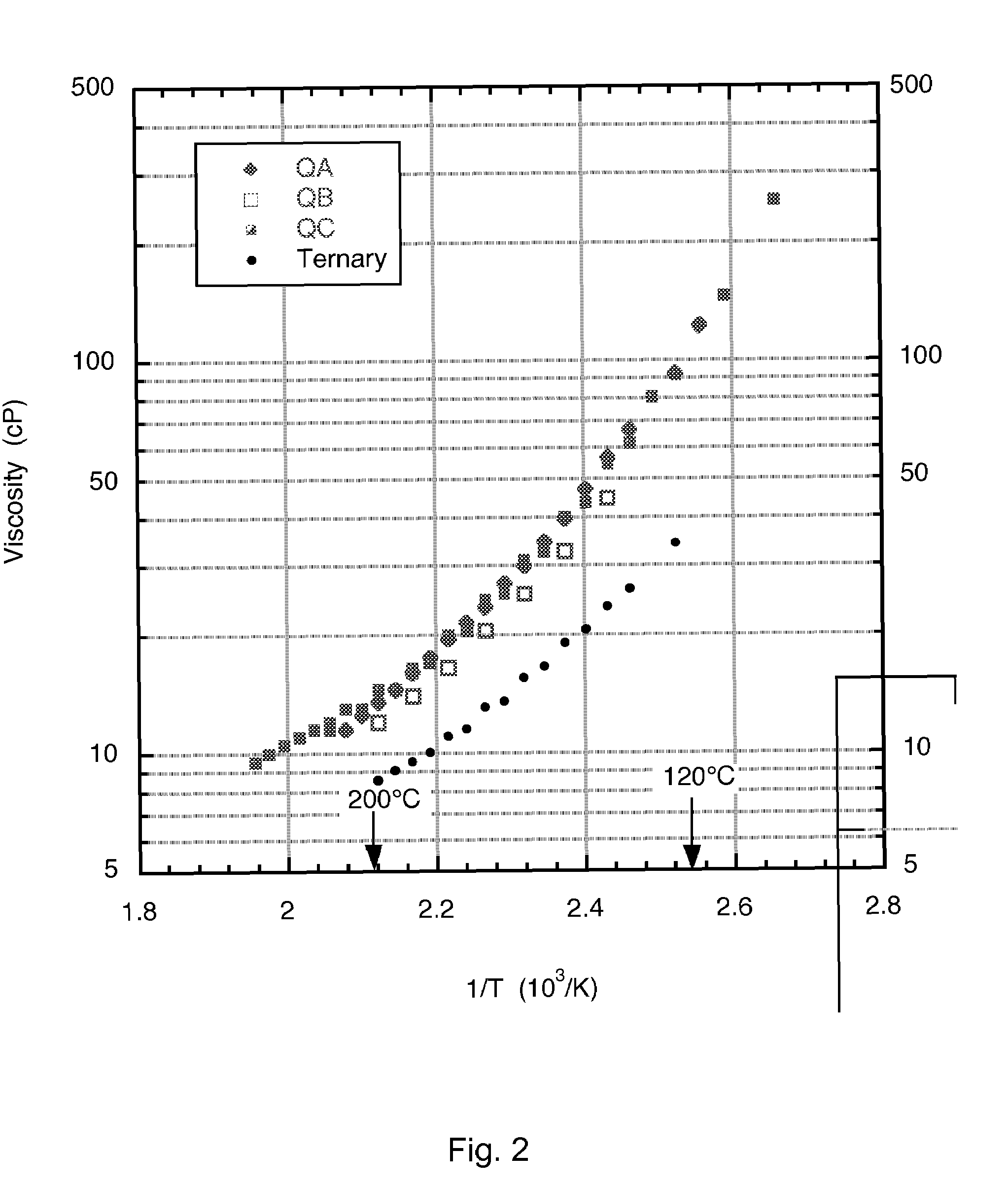Low-melting point inorganic nitrate salt heat transfer fluid
a technology of inorganic nitrate salt and heat transfer fluid, which is applied in the direction of collector working fluid, solar thermal energy generation, chemistry apparatus and processes, etc., can solve the problems of limiting the gross efficiency of the rankine cycle, high capital investment cost, and annual capacity factor
- Summary
- Abstract
- Description
- Claims
- Application Information
AI Technical Summary
Problems solved by technology
Method used
Image
Examples
Embodiment Construction
[0017]A heat transfer fluid (HTF) for use at elevated temperatures was formulated by combining sodium nitrate, potassium nitrate, lithium nitrate and calcium nitrate. The key properties that are provided by the particular range of compositions determined experimentally are low solidification point, stability at high temperature, stability in contact with air, low viscosity, low cost, non-corrosive to typical container materials, low vapor pressure and high heat capacity. The heat transfer liquid may be used for heat collection and transfer; and thermal energy storage in solar energy systems, among other applications. A new formulation of molten nitrate salts will first and foremost provide a heat transfer fluid that has a lower freezing point than is currently available from any molten salt mixture of inorganic nitrate and / or nitrite salts available commercially. A solid phase will not form in these mixtures until the temperature is below 100° C. This allows the HTF to be used in ap...
PUM
| Property | Measurement | Unit |
|---|---|---|
| liquidus temperature | aaaaa | aaaaa |
| viscosity | aaaaa | aaaaa |
| freezing point | aaaaa | aaaaa |
Abstract
Description
Claims
Application Information
 Login to View More
Login to View More - R&D
- Intellectual Property
- Life Sciences
- Materials
- Tech Scout
- Unparalleled Data Quality
- Higher Quality Content
- 60% Fewer Hallucinations
Browse by: Latest US Patents, China's latest patents, Technical Efficacy Thesaurus, Application Domain, Technology Topic, Popular Technical Reports.
© 2025 PatSnap. All rights reserved.Legal|Privacy policy|Modern Slavery Act Transparency Statement|Sitemap|About US| Contact US: help@patsnap.com



